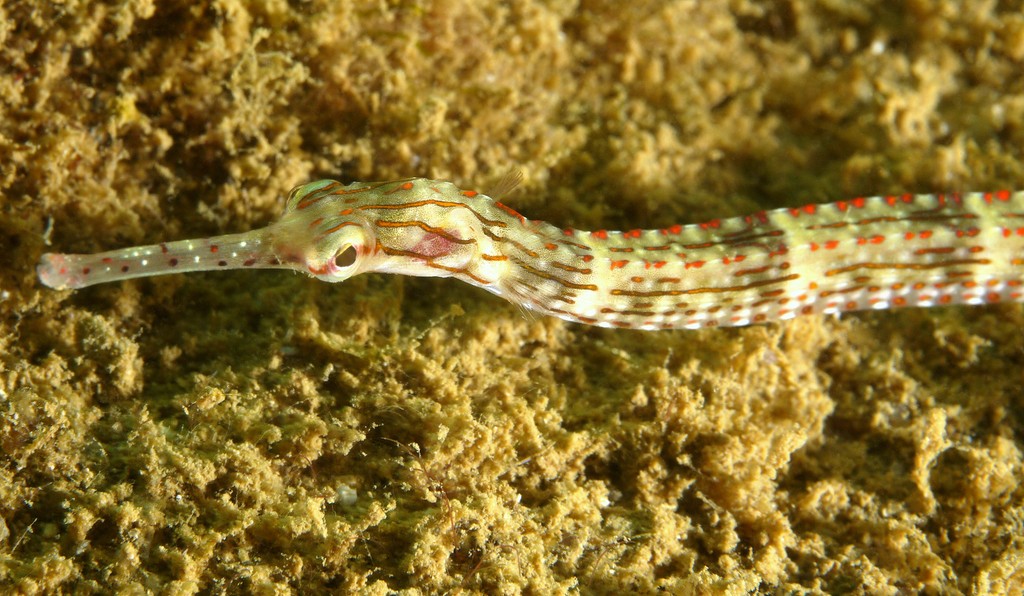CORYTHOICHTHYS SCHULTZI - (HERALD, 1953)
Picture courtesy of: Gloup Noumea
Actinopterygii (Gigaclass) > Actinopteri (Class) > Teleostei (Subclass) > Syngnathiformes (Order) > Syngnathoidei (Suborder) > Syngnathidae (Family) > Syngnathinae (Subfamily) > Corythoichthys (Genus)
Syngnathe de Schultz, Syngnathe à pointillés, poisson-pipe annelé, poisson-aiguille de Schultz, Guilded pipefish, schultz' pipefish, Pesce ago, Pez erizo base de punto, Schultz's Seenadel, Schultz´s zeenaald, Morseneula.
Description
Dorsal spines (total): 0; Dorsal soft rays (total): 25-31. Superior trunk and tail ridges discontinuous; lateral trunk ridges straight, ending near anal ring; inferior trunk and tail ridges continuous; body rings 15-17; tail rings 32-39. Max length : 16.0 cm. Depth range 2 - 30 m.
Etymology
Corythoichthys: Greek, korys, korythos = helmet + Greek, ichtys = fish.
Distribution
Indo-Pacific: Red Sea and East Africa to Tonga, south to northern Australia and New Caledonia.
Biology
Found among corals or sea fans in lagoon and seaward reefs. Adults in pairs or small aggregations when in the open or in safe places at night. Ovoviviparous. The male carries the eggs in a brood pouch which is found under the tail.
Syngnathe de Schultz, Syngnathe à pointillés, poisson-pipe annelé, poisson-aiguille de Schultz, Guilded pipefish, schultz' pipefish, Pesce ago, Pez erizo base de punto, Schultz's Seenadel, Schultz´s zeenaald, Morseneula.
Description
Dorsal spines (total): 0; Dorsal soft rays (total): 25-31. Superior trunk and tail ridges discontinuous; lateral trunk ridges straight, ending near anal ring; inferior trunk and tail ridges continuous; body rings 15-17; tail rings 32-39. Max length : 16.0 cm. Depth range 2 - 30 m.
Etymology
Corythoichthys: Greek, korys, korythos = helmet + Greek, ichtys = fish.
Distribution
Indo-Pacific: Red Sea and East Africa to Tonga, south to northern Australia and New Caledonia.
Biology
Found among corals or sea fans in lagoon and seaward reefs. Adults in pairs or small aggregations when in the open or in safe places at night. Ovoviviparous. The male carries the eggs in a brood pouch which is found under the tail.
